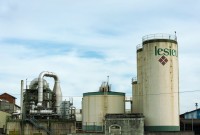- Home
- Business Processes
- Industry Knowledge
- Aerospace Industry
- Automotive Industry
- Banking Domain
- BFSI Industry
- Consumer/ FMCG Industry
- Chemicals Industry
- Engineering & Construction
- Energy Industry
- Education Domain
- Finance Domain
- Hospitality Domain
- Healthcare Industry
- Insurance Domain
- Retail Industry
- Travel and Tourism Domain
- Telecom Industry
- Leadership Skills
- eLearning
- Home
- Domain Knowledge
- Chemicals Industry
- Trends in Chemicals Industry
Trends in Chemicals Industry
Industry trends are examined to make predictions. This article discusses the trends in the chemicals industry including trends related to consumer behavior, employment, technological advancements, new product development, competition, government norms, and other factors that impact the industry.
Key Trends in the Global Chemicals Industry:
The global chemical industry has sales estimated at $2.5 trillion dollars and the sector is experiencing an unprecedented period of mergers and positive earnings reports. New issues such as the need for innovation, changing consumer preferences, and the forces of globalization create new challenges for the global chemicals sector. This article examines patterns and trends in global production, use, and disposal of chemicals and products containing chemicals and key trends affecting the global chemicals industry. The key trends affecting the chemicals industry are:
- Raw Material Prices & Availability
- Economic Forces and continued Globalization
- Regulatory Environment and Impact of Shift
- Mergers, Partnerships, and Acquisitions
- Role and Need for Innovation
Raw Material Prices & Availability:
The main raw materials of the chemical industry are fossil fuel, water, air, salt, limestone, sulfur, and other specialized raw materials. The industry converts these materials into products; a chief characteristic of the industry is that its products almost always require further processing before reaching end users.
A variety of global economic forces influence trends in chemical production. The growth of the chemicals industry in developing countries is influenced both by countries ‘needs for additional production domestically and by production-related to trade. Factors influencing the location of growth of chemical use in manufacturing include proximity to raw materials, proximity to final markets, development policies, and a suite of factors involved in the emergence of multinational chemical companies.
Raw material prices are undoubtedly one of the most critical driving forces for the sector and largely determine where new production arises. Currently, the industry is highly dependent on the global natural gas supply. This has grave implications for chemicals producers unless new energy resources can be accessed by the sector. Calls are being made for greater funding of coal gasification projects.
Economic Forces and continued Globalization:
The chemical industry is evolving as a truly globalized industry in which competition takes place at a global level. The continued globalization of the industry is a source of opportunity for chemical companies. Companies wanting to expand are looking toward growing regional markets around the world. The increased capacity in developing countries, combined with a decrease in demand in developed countries, means that many companies in developed countries are selling off or shutting down capacity. This means that the chemicals industry is experiencing slower growth in developed markets and increasing growth in developing markets, as a matter of fact, emerging economies have a more chemical-intensive pattern of the economy. This has resulted in the emergence of multinational chemical companies that are driving the worldwide expansion of the chemicals industry and as a consequence, the majority of global investment in chemical plants is occurring in the developing world.
Regulatory Environment and Impact of Shift:
Chemicals can affect all aspects of natural resources: atmosphere, water, soil, and biodiversity. Many of the chemicals are well known environmental contaminants in developed countries. The increasing use of these chemicals in developing countries is likely to produce similar patterns of environmental contamination. As developing countries and countries with economies in transition doing a large scale of chemical production and consumption, these changes also have potential implications for human health.
Global issues relating to business conditions and business structures increase business complexity. Chemical companies are centralizing around lines of business (both products and markets), clarifying matrix structure accountabilities, and shifting to global management processes.
Companies are recognizing that green product design principals may help top and bottom-line growth. The sector is already in full swing in the race to meet the demand for alternative and renewable energy technologies. These trends will gradually change the face of the chemicals sector, particularly as new technologies at the quantum scale enable increasingly cleaner modes of production and which may yield fundamentally safer products over the very long-term.
Mergers, Partnerships, and Acquisitions:
Consolidation continues in an attempt to achieve focus, scale, and market share. The number of mergers and acquisitions in the chemicals industry is increasing. Mergers and acquisitions are used by companies to fulfill several business objectives like achieving scale, market share, sustaining growth, and reducing costs. Chemical companies in developed economies can take advantage of lower costs in developing economies, by merging with or acquiring companies based in those countries. Smaller companies in emerging economies can benefit by integrating with larger companies by getting access to the capital which can help fund activities such as research and development and make them better equipped to move higher in the Chemicals Industry Value Chain and become more competitive.
With acquisitions, mergers, and partnerships certain to play a prominent role in the chemical industry, particularly for expanding operations in developing and emerging nations, the industry’s biggest challenge could be the effective post-merger integration and it needs to devise strategies so that post-merger operations can continue seamlessly.
Role and Need for Innovation:
Innovation: Innovation is much more than just Research &Development activities rather it is a company-wide strategic thrust driven by a culture that encourages and rewards new ideas in all aspects of the business, from design to marketing, from manufacturing to talent development. A successful innovation strategy is based on insightful knowledge about what customers need and want, along with a process for using this information to lead market-back product development. This also needs to be supported by highly visible leadership commitment for innovation, including investment pools for novel ideas and ambitious targets for innovation-driven growth across the organization to encourage entrepreneurialism. Moreover, direct exposure of business managers, including the CEO, to markets and customers is critical, as is establishing application development and production facilities and customer relations centers in the areas (such as emerging nations) where market growth is expected to be strongest and where proximity to customers can be a significant advantage.
Innovation in the chemicals industry is resulting in new products that increase energy efficiency, enhance environmental protection, and reduce reliance on oil-based products. As the chemical industry becomes more challenging due to global developments, innovation as a core capability will be the key differentiator and a key determinant of success.
Related Links
You May Also Like
-
This article provides a concise history of the chemicals industry. How the chemical industry progressed and changed over time. Explore the journey of the Chemical industry from the early ages to the twenty-first century. Chemicals have been manufactured for thousands of years. The history of the chemicals industry can be traced back to ancient times when alkali and limestone were combined to make glass, and sulfur and saltpeter became an explosive that is similar to modern gunpowder.
-
Fundamentally, the chemicals industry can be divided into two sectors; commodity/basic chemicals and specialty chemicals. Commodity chemicals are manufactured by many different companies however the end product is generally the same with very little variations. There exist other segmentations for this industry as well. Understand the main sectors of the chemical domain.
-
Importance / Impact of Chemicals Industry
Chemical Industry is engaged in the development, optimization, and monitoring of fundamental chemical processes used in industry for transforming raw materials and precursors into useful commercial products for society. Learn more about the importance and impact of the chemical industry on agriculture, environment, hygiene, food, painting, etc.
-
Overview of Chemicals Industry
The chemical industry is critical for the economic development of any country, providing products, and enabling technical solutions in virtually all sectors of the economy. This article provides an overview of the chemical industry, explaining the definition and processes in the chemical domain. Read about the various segments of the chemical industry and what they do. A brief discussion on the major players in the chemical domain and their impact on the global and US economy.
-
Business Model & Value Chain of Chemicals Industry
Understand the three critical business models applied by the Chemicals Industry to create value for its customers; asset-driven business model, integrated business model, and specialties business model. This article also explains the chemical industry value chain and provides some practical examples for a better understanding.
-
Chemicals Industry’s Supply Chain
This article explains the chemical industry supply chain and addresses key questions like the importance of supply chain management and why the chemicals industry needs to focus on supply chain management. Understand the key factors influencing the supply chain for the chemicals industry and strategies to overcome the current challenges.
-
Industry trends are examined to make predictions. This article discusses the trends in the chemicals industry including trends related to consumer behavior, employment, technological advancements, new product development, competition, government norms, and other factors that impact the industry.
Explore Our Free Training Articles or
Sign Up to Start With Our eLearning Courses

About Us
Learning
© 2023 TechnoFunc, All Rights Reserved







